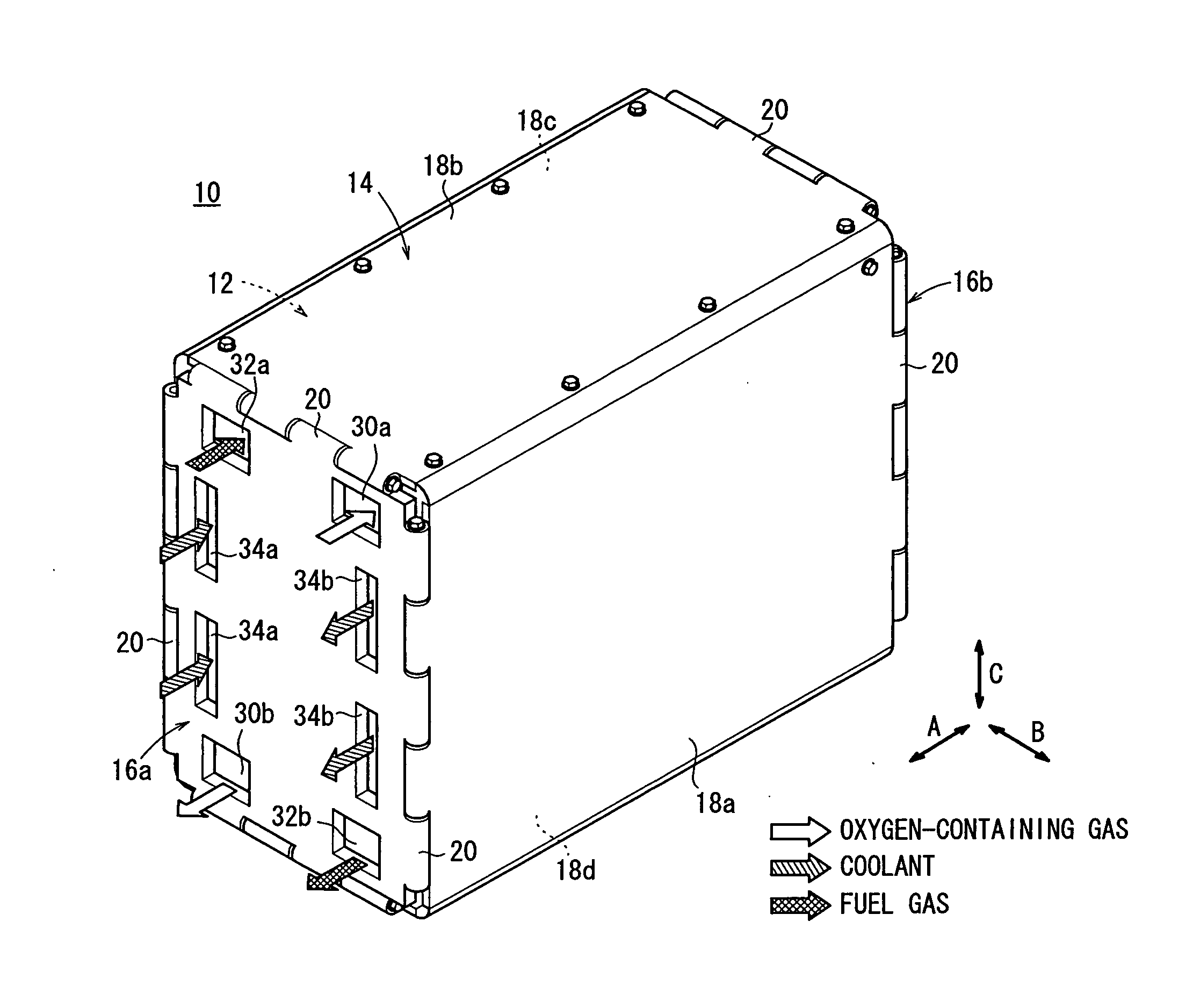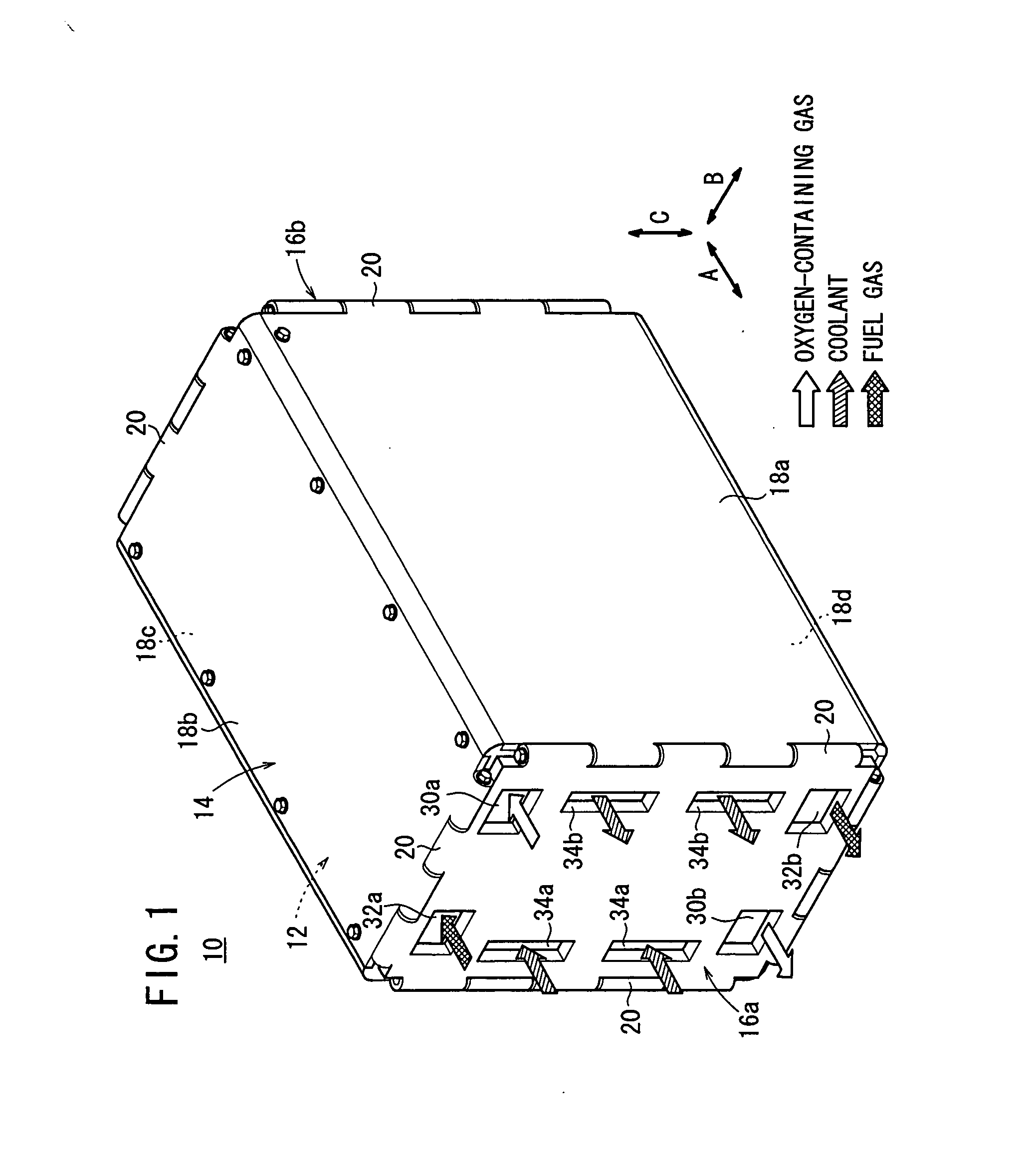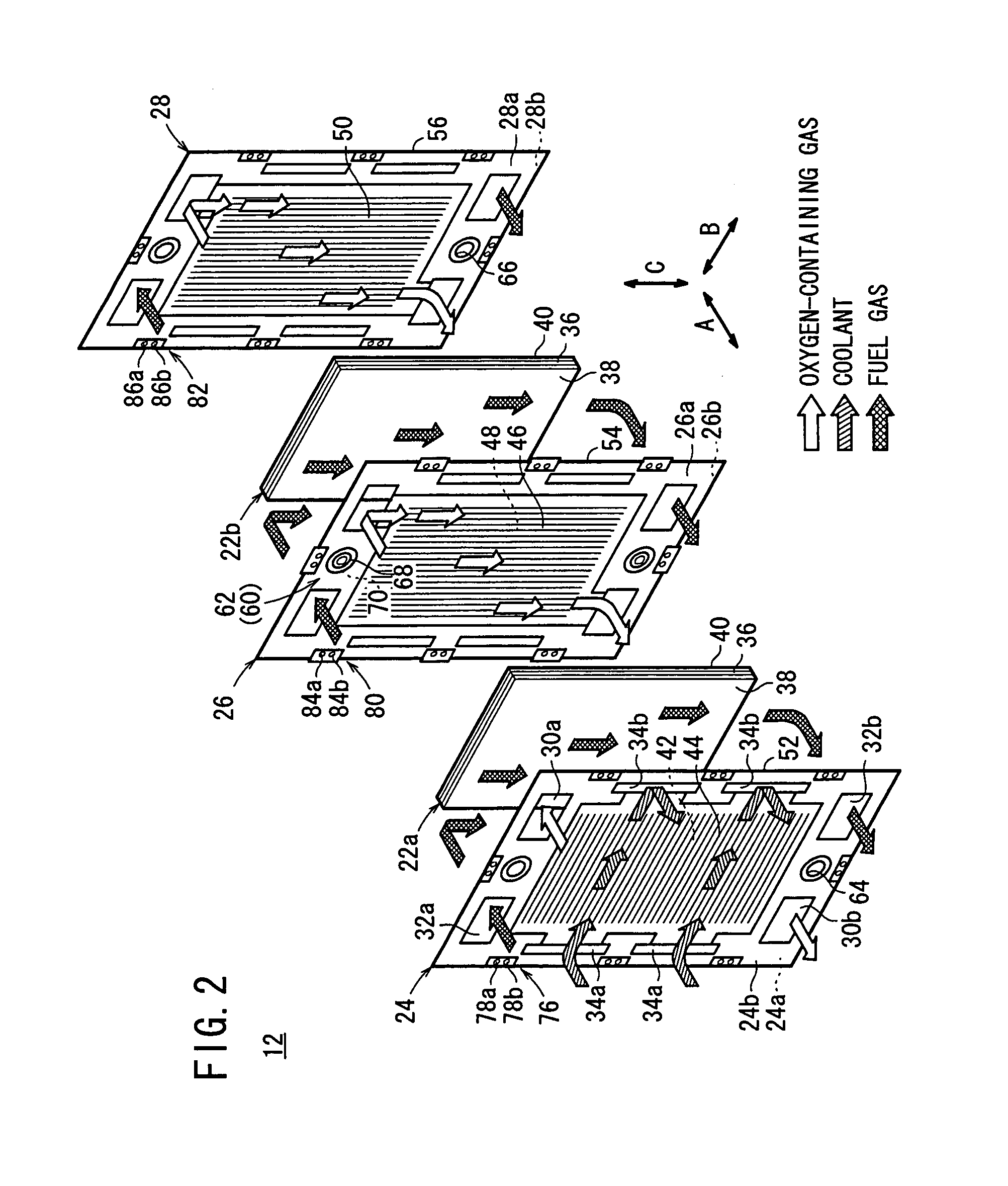Fuel cell stack
a fuel cell and stack technology, applied in the field of fuel cell stacks, can solve the problems of short-circuiting of separators and degrading the sealing performance of fuel cells, and achieve the effect of simple structure and reliably preventing short-circuiting or degradation of sealing performan
- Summary
- Abstract
- Description
- Claims
- Application Information
AI Technical Summary
Benefits of technology
Problems solved by technology
Method used
Image
Examples
first embodiment
[0028]FIG. 1 is a perspective view showing a fuel cell stack 10 according to the present invention.
[0029]The fuel cell stack 10 is formed by stacking a plurality of fuel cell units 12 in a casing 14, in the direction indicated by the arrow A. The casing 14 includes end plates 16a, 16b provided at opposite ends of the fuel cell unit 12 in the stacking direction, four side plates 18a to 18d provided on sides of the fuel cell unit 12, and hinge mechanisms 20 for coupling the end plates 16a, 16b and the side plates 18a to 18d together.
[0030]As shown in FIG. 2, the fuel cell unit 12 includes at least a first membrane (electrolyte) electrode assembly 22a and a second membrane electrode assembly 22b, along with at least a first separator 24, a second separator 26, and a third separator 28. The first membrane electrode assembly 22a is sandwiched between the first separator 24 and the second separator 26. The second membrane electrode assembly 22b is sandwiched between the second separator 2...
second embodiment
[0075]In the second embodiment, since the resin clips 102 have the slits 104 therein, the resin clips 102 have a certain elasticity. Therefore, when an external load F is applied to the resin clip 102 through the load receiver 80, the resin clip 102 is deformed elastically through the slits 104, whereby the external load F can be absorbed.
[0076]In this structure, the resin clip 102 has both a load absorption function and a load distribution function, for distributing the load to the first separator 24, the second separator 26, and the third separator 28. Therefore, it is possible to further reliably prevent displacement or sealing failure of the fuel cell unit 12.
third embodiment
[0077]FIG. 9 is an enlarged cross sectional view showing principal components of a fuel cell stack 110 according to the present invention.
[0078]Load receivers 112, 114, 116 are disposed integrally with the first separator 24, the second separator 26, and the third separator 28, of each fuel cell unit 12. The load receivers 114 of the second separator 26 protrude outwardly beyond the load receivers 112, 116. As shown in FIGS. 9 and 10, a plurality of small holes (apertures) 118 are formed at front ends of the load receivers 112, 114 and 116.
[0079]Resin clips 102 (or 88) are inserted into the load receivers 112, 114, 116 in order to fix the first separator 24, the second separator 26, and the third separator 28 together.
[0080]In the third embodiment, as shown in FIG. 9, an external load is applied to the casing 14. As a result, when the side plate 18a is deformed internally and comes into contact with inner front ends of the load receivers 114, owing to the presence of the small holes...
PUM
 Login to View More
Login to View More Abstract
Description
Claims
Application Information
 Login to View More
Login to View More - R&D
- Intellectual Property
- Life Sciences
- Materials
- Tech Scout
- Unparalleled Data Quality
- Higher Quality Content
- 60% Fewer Hallucinations
Browse by: Latest US Patents, China's latest patents, Technical Efficacy Thesaurus, Application Domain, Technology Topic, Popular Technical Reports.
© 2025 PatSnap. All rights reserved.Legal|Privacy policy|Modern Slavery Act Transparency Statement|Sitemap|About US| Contact US: help@patsnap.com



